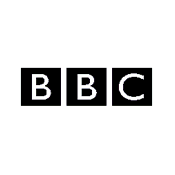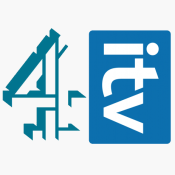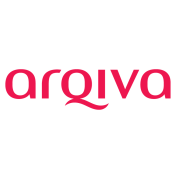Why do the six Freeview "multiplexes" have twenty different names?
 Brian Butterworth published on UK Free TV
Brian Butterworth published on UK Free TV All digital television services - from cable and satellite to terrestrial transmission - were planned and implemented to use the existing "analogue" broadcasting infrastructure.
The engineers who designed the services created digital broadcasting systems that would allow the reliable distribution of bits using the same infrastructure of cables and masts (or satellites) that already carried the analogue services to millions of homes.
Part of the design process allowed for more than one television channel to be carried by the digital system using a long-established data-processing technique called "multiplexing", a word that had, by another route, also come to mean a cinema complex where several films are shown at once on different screens.
It was back in 1996 that Parliament decided that the UK should have a six-multiplex service.
The Broadcasting Act 1996 provided that these "multiplex licences" should be issued for 12 years with a one-time right-to-renew.
Independent Television Commission: 1, 2, A, B, C and D
The regulator at the time, the ITC (Independent Television Commission) said:Of these six multiplexes, two are wholly reserved for existing broadcasters who are guaranteed places on the multiplexes under the Broadcasting Act 1996. The first will be used by the BBC to transmit existing programmes in digital form and develop new digital services. The second is reserved for Channel 3, Channel 4 and Teletext Ltd whose existing services will be reproduced in digital form, and who can use the additional capacity available for new services. This multiplex will be licensed and regulated by the ITC.
Licences to operate the remaining four were advertised and three have now been awarded to British Digital Broadcasting plc (BDB). The fourth multiplex, the third largest in terms of UK coverage, has been awarded to S4C Digital Networks Ltd (SDN). It will carry the new Channel 5, S4C in Wales, and a certain amount of Gaelic programming during peak hours in Scotland.
The ITC named the "wholly reserved" multiplexes 1 and 2, and the others, by the level of coverage: A, B, C and D.

British Digital Broadcasting plc eventually launched their service as ONdigital on 15th November 1998, re-launched as ITV Digital on 11th July 2001 and went out of business on 1st May 2002.
ITV Digital handed back B, C and D multiplex licences to the regulator, who awarded them to the promise of a free-to-air service the BBC and Crown Castle International, a company formed by the privatization of the BBC's transmitter network.
Freeview
 When Freeview started on 30th October 2002, the BBC realised that the existing broadcasting "mode" used for the digital services was causing problems for some viewers. For this reason, some multiplexes changed from "mode 1" to "mode 2" (see the diagram at the end of the article), which provided a more stable signal, but with the loss of some channel capacity. See Freeview modes - a simplified explanation for a longer discussion about this.
When Freeview started on 30th October 2002, the BBC realised that the existing broadcasting "mode" used for the digital services was causing problems for some viewers. For this reason, some multiplexes changed from "mode 1" to "mode 2" (see the diagram at the end of the article), which provided a more stable signal, but with the loss of some channel capacity. See Freeview modes - a simplified explanation for a longer discussion about this.
This was not a problem for the BBC with six full-time television channels to fit onto two whole multiplexes. So, multiplexes 1, B, C and D changed to the robust mode, but 2 and A did not.
Ofcom plans PSBs and COMs
 During the planning for the digital switchover, where the existing analogue channels are turned off over several years, Ofcom, now the regulator used the names PSB1, PSB2, COM4, PSB3, COM5 and COM6 to refer to the six multiplexes.
During the planning for the digital switchover, where the existing analogue channels are turned off over several years, Ofcom, now the regulator used the names PSB1, PSB2, COM4, PSB3, COM5 and COM6 to refer to the six multiplexes.
PSB refers to the "public service broadcasters" (BBC, Channel 3 licence holders - ITV plc, STV and UTV, Channel 4 Corporation, S4C - Sianel Pedwar Cymru, Channel 5 and the "public teletext service".
The PSB multiplexes have almost total coverage of UK homes - 98.5%, and are broadcast from all television masts in the UK, including 1,036 smaller ones that only carry the PSB services.
COM is an abbreviation of "commercial", referring to the two multiplexes held by Arqiva, the company that owns and operates all of the UK television transmitters, and SDN, a company owned by ITV plc.
The COM multiplexes have coverage of around 90%, and are broadcast from the main 81 transmitters.
Because this planning required that all multiplexes move to "mode 3" the post-switchover multiplexes these new descriptions have been widely used to represent the "final" multiplexes, even though legally they are named 1, 2, A, B, C and D - see Ofcom - Multiplex licensees.
The introduction of Freeview HD has seen the BBC change the use of the BBC multiplex to "DVB-T2" mode, and in addition, during 2012 the commercial multiplexes have changed to "mode 8 configuration", which has increased their capacity by another 12.5% - see Changes to commercial multiplex capacity - 2012 timetable .
Eight more names
Digital UK now refers to the multiplex by the name of the ower, usually four letters, but sometimes the written in full, so we now have:Multiplex 1 is also known as PSB1 and also BBCA
 BBCA denotes the first BBC multiplex when in "mode 3", with all the services from "mode 2" multiplexes 1 and B. This multiplex has many regional versions to supply BBC regional news on BBC One.
BBCA denotes the first BBC multiplex when in "mode 3", with all the services from "mode 2" multiplexes 1 and B. This multiplex has many regional versions to supply BBC regional news on BBC One.
Multiplex 2 is also known as PSB2 and also D3+4
 The legal owner is "Digital 3 and 4 Ltd", which is half-owned by the Channel 3 licensee, and half-owned by the Channel 4 Corporation. This multiplex has more than 20 regional versions to supply regional news on ITV 1/STV/UTV, plus advert regions for that station, Channel 4, Channel 5 and the channels 3 and 4 "plus one" services.
The legal owner is "Digital 3 and 4 Ltd", which is half-owned by the Channel 3 licensee, and half-owned by the Channel 4 Corporation. This multiplex has more than 20 regional versions to supply regional news on ITV 1/STV/UTV, plus advert regions for that station, Channel 4, Channel 5 and the channels 3 and 4 "plus one" services.
Multiplex A is also known as COM4 and also SDN
 SDN, originally "S4C Digital Networks" was sold to ITV plc in April 2005 for £134m. The SDN multiplex has two versions, one for Wales, where it carries E4 and one for the rest of the UK.
SDN, originally "S4C Digital Networks" was sold to ITV plc in April 2005 for £134m. The SDN multiplex has two versions, one for Wales, where it carries E4 and one for the rest of the UK.
Multiplex B is also known as PSB3 and also BBCB
Multiplex C is also known as COM5 and also ArqA (or ArqivaA)
 The "mode 3" (now "mode 8") post-switchover ArqA/COM5 multiplex carries all the services on "mode 1" Multiplex C, with space for couple of extra TV channels.
The "mode 3" (now "mode 8") post-switchover ArqA/COM5 multiplex carries all the services on "mode 1" Multiplex C, with space for couple of extra TV channels.
Multiplex D is also known as COM6 and also ArqB (or ArqivaB)
 The "mode 3" (now "mode 8") post-switchover ArqA/COM5 multiplex carries all the services on "mode 1" Multiplex D, with space for couple of extra TV channels, which include 4seven and two subscription channels, Sky Sports 1 and 2.
The "mode 3" (now "mode 8") post-switchover ArqA/COM5 multiplex carries all the services on "mode 1" Multiplex D, with space for couple of extra TV channels, which include 4seven and two subscription channels, Sky Sports 1 and 2.
Freeview standard transmission "modes"

The above diagram illustrates the capacity of different ONdigital/ITV digital/Freeview transmissions over the years. The longer the bar, the more bits are transmitted per second. Mode 2 is 16QAM, mode 7 is QSPK, the DVB-T2 modes are 256QAM, the rest 64QAM.
1:03 AM
London
Hi, I have lost all ArqB/MUX D channels on my digibox since the London switchover. I've tried a first time installation, doing the unplug the aerial cable and scan with no signal etc procedure and still nothing. I am feeling deprived as I have no film4 and yesterday. I live in Central London and am hoping the problem will "right itself" but having rescanned a number of times since yesterday morning, I'm not holding out much hope. Any advice would be welcome, ta!
| link to this comment |
Ami's: mapA's Freeview map terrainA's terrain plot wavesA's frequency data A's Freeview Detailed Coverage
2:29 PM
Ami, hi same problem with loss of Film4 and Yesterday but am receiving in GU34 from Rowledge. Looks to me that now post switchover I will have to change aerial or move to vertical polarisation and upgrade coax cable. I thought I was ahead of the game getting digital some time back with freeview NO ONE said that some digital viewers will have to upgrade (£££) to keep the same programmes. Not good!!!The aerial installers must be working double time.
| link to this comment |
7:23 PM
Halesowen
Hi Brian
for some unknown reason just lately
in my area ( b67 5hh )i and neighbours do appear to have lost channel 11 Freeview
can you offer any explanation for this
this has happened over the last 2 weeks or so
whereas before everthing was all OK
we are all off the Sutton-coldfield transmitter
regards john
| link to this comment |
JOHN's: ...
1:06 AM
Littlehampton
I have now lost all of the channels on multiplex d, or com 6 arq b as it is now known. all was fine until i did a re-scan today (23.4.12)
what can i do please?
| link to this comment |
JENNY's: ...
5:51 PM
Haslemere
Hi - p/c GU27 2DG and received local digital (Haslemere Relay) ok until Tues 17th. Lost signal until retuned set Thurs. and then only able to get LONDON service! Complained to Digital.co.uk who put me in touch with the BBC. Appears that when Crystal Palace went full power (sometime around 17/18th and 20kW) as PSB1 PSB2 are on the same frequecies as Haslemere, even though aerial pointing directly at Haslemere R, CP swamping local signal! Have raised complaint and being investigated. Would be nice to get BBC South and Meridian back rather than irrelevant stuff from LONDON !!!
| link to this comment |
Mr's: mapM's Freeview map terrainM's terrain plot wavesM's frequency data M's Freeview Detailed Coverage
Mr KN Young: My sympathies are with you.
We discussed this point a few months ago and it was clear that there will be some in the area who will no longer be able to receive from the Haslemere relay:
Haslemere digital TV transmitter | ukfree.tv - independent free digital TV advice
You are right on the edge of (or "was" on the edge of) the Haslemere relay's signal as it beams the main part of its signal in the direction of the town in the valley. Clearly this is no match for the Crystal Palace channels at your location.
I'm not a great complainer, but as a matter of principle I would probably do in this case. However, I was going to suggest that you raise this matter with your MP, but then I found out who it is...
As far as Meridian programmes goes, the Digital UK predictor isn't inspiring. It suggests Guildford and the "other" transmitter which are both London region.
If there were ever to be an outside chance of receiving from another transmitter like Midhurst, you may have even more difficulty with all those trees.
On the face of it, Freesat may be your only way of restoring your local news. I suggest it not because I want to, but because it may be your only option.
| link to this comment |
Mr KN Young: Have you looked through your 800s to see if there is Meridian in there?
Have you confirmed that C28 and C22 (from Haslemere) are not receivable?
The predictor at your location reckons that Guildford is the best. A long shot perhaps, but I wonder if it has tuned to that which is off the back of your aerial and that in actual fact Haslemere is still receivable. You may have already have gone along this road, but if not then I suggest that you check.
To avoid the possibility of picking up Guildford, run the automatic tuning scan and unplug the aerial when it gets to 30%.
Then see what BBC and ITV you have by bringing up the signal strength screen. For Haslemere it should be 28 and 22 respectively. It may be 23 and 26 which is CP. If it is, then see if Yesterday is on programme number 12. This is C28 from CP. Similarly look for Pick TV on number 11 which is C22 from CP.
If you find that Pick TV and Yesterday are coming in on 22 and 28, then you know that CP is swamping the Haslemere signals, even though the aerial doesn't face it. If they aren't there, then see if BBC and ITV from Haslemere are in your 800s.
If you manually tune to 22 and 28 and get a signal but no quality, then you know that the two are interfering with one another with no winner.
Hope this helps. As I say, I commend this to you in case you haven't already tried it.
If you do find that Haslemere's channels are in there, then it may need a bit of work to get them under the proper logical channel numbers. I can offer further suggestions should that turn out to be the case.
| link to this comment |
7:39 PM
Thx David Lindsay for your suggstions. Yes is the answer really - I have treid retuning and we do get Yesterday + Pick Tv which initially alerted me to the fact that the transmission wasn't Haslemere R ! Haven't tried disconnecting aerial after 30% so may give that a shot later. And yes, did flag to Digital re raising with MP and joint conclusion was it would be waste of time! One area of hope - Midhurst has 2 relays, Haslemere and Styning. Styning has its freq. changed in Oct (prob due to interference/clashes) so why not Haslemere? tbc.
| link to this comment |
Mr KN Young: I suspect that the changes to channels at Steyning are to do with the clearance of C61 upwards for mobile 4G use. A number of transmitters are affected and this October seems to be at least one of the times when retunes are going to be needed.
Unfortunately there is no such change due for Haslemere.
One of the issues is that C31 to C37 are being cleared at switchover. This is (or was if the powers that be can make up their minds) going to be used (auctioned off, naturally!) for other TV channels. Consequently, Group A channels that are available for use went from 21 through to 34 to only 21 to 30. As aerials (particularly in the past) tended to be for a particular Group rather than the whole band, most transmitters have kept the same Group (for Public Service channels at least). So now there are effectively less Group A channels available, which is why Haslemere clashes with CP. In other areas, *some* Group A transmitters have some or all Commercial channels (Pick TV, Yesterday etc) out of Group (higher up channels), requiring most people who use them to get a new aerial if they want to watch these channels. As I say, in most cases Public Service channels are in Group.
Even though Midhurst is less than six miles away, you don't have line of sight and from what I can see, the hills that the signal comes over to get to you are covered in trees which isn't good:
Terrain between ( m a.g.l.) and (antenna m a.g.l.) - Optimising UK DTT Freeview and Radio aerial location
Perhaps you could contact your local newspaper about this.
| link to this comment |
7:19 PM
I have a digihome pvr (vestel t816) which was fine until the swithover and retune. I have now lost all progs ( film 4, itv4 ect.) on channel 28, and no amount of retuning can get them back. I cant see it being the ariel, as both tv's have tuned to them fine. on a manual scan on pvr of channel 28 from crystal palace - it says no signal. Any ideas ? Thanks
| link to this comment |